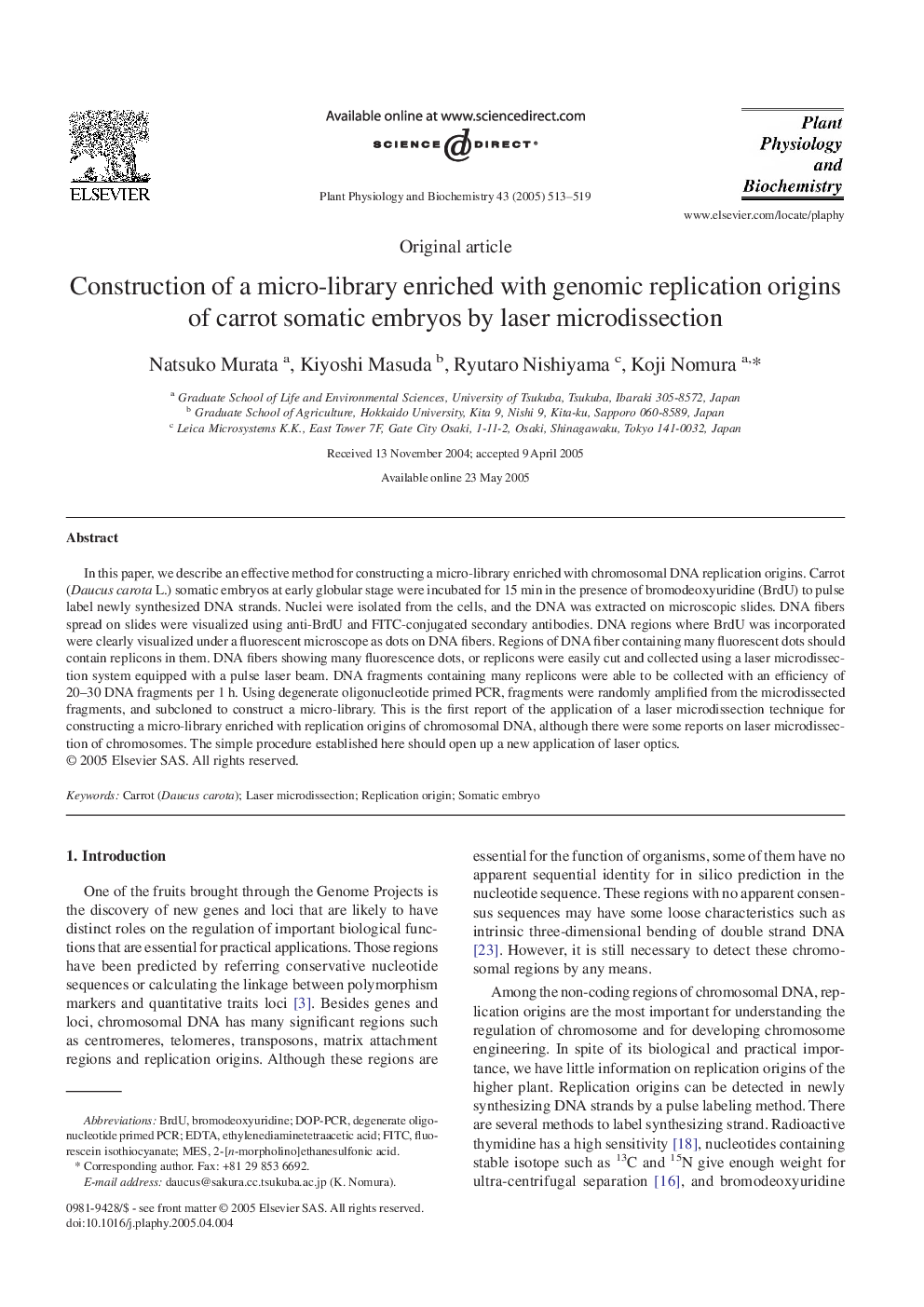| Article ID | Journal | Published Year | Pages | File Type |
|---|---|---|---|---|
| 10840124 | Plant Physiology and Biochemistry | 2005 | 7 Pages |
Abstract
In this paper, we describe an effective method for constructing a micro-library enriched with chromosomal DNA replication origins. Carrot (Daucus carota L.) somatic embryos at early globular stage were incubated for 15Â min in the presence of bromodeoxyuridine (BrdU) to pulse label newly synthesized DNA strands. Nuclei were isolated from the cells, and the DNA was extracted on microscopic slides. DNA fibers spread on slides were visualized using anti-BrdU and FITC-conjugated secondary antibodies. DNA regions where BrdU was incorporated were clearly visualized under a fluorescent microscope as dots on DNA fibers. Regions of DNA fiber containing many fluorescent dots should contain replicons in them. DNA fibers showing many fluorescence dots, or replicons were easily cut and collected using a laser microdissection system equipped with a pulse laser beam. DNA fragments containing many replicons were able to be collected with an efficiency of 20-30 DNA fragments per 1Â h. Using degenerate oligonucleotide primed PCR, fragments were randomly amplified from the microdissected fragments, and subcloned to construct a micro-library. This is the first report of the application of a laser microdissection technique for constructing a micro-library enriched with replication origins of chromosomal DNA, although there were some reports on laser microdissection of chromosomes. The simple procedure established here should open up a new application of laser optics.
Keywords
Related Topics
Life Sciences
Agricultural and Biological Sciences
Plant Science
Authors
Natsuko Murata, Kiyoshi Masuda, Ryutaro Nishiyama, Koji Nomura,
